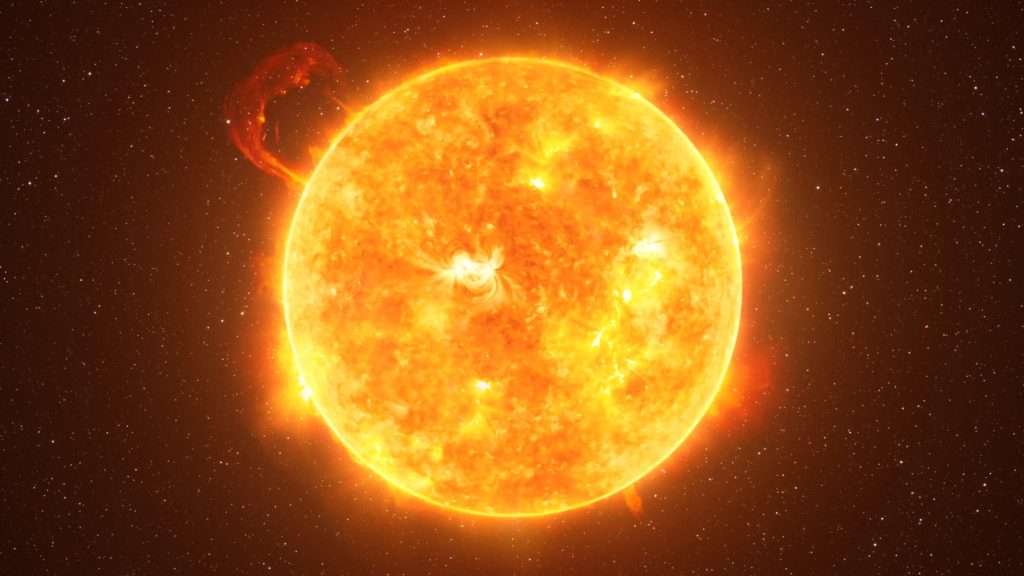When it comes to space weather, Surya is the closest thing to a real-time “digital twin of the Sun” that we’ve ever had. Built by NASA and IBM, it watches the star in exquisite detail. Then it turns those observations into short-term forecasts that spot solar flare trouble up to two hours ahead…double the lead time of older systems.
That extra window helps protect satellites, power grids, airplane routes, and even astronauts from sudden bursts of radiation and radio blackouts.
Surya: what it is and why it matters
At heart, Surya (which means Sun in Sanskrit) is a scientific “foundation model”—a generalist AI trained on a mountain of solar data so it can be adapted to many tasks. In early tests, the system produced visual predictions that mark where on the Sun a flare is likely to erupt, and it did so with a 16% improvement over previous benchmarks. Put simply: it sees the warning signs earlier and more reliably, turning raw imagery into practical alerts.
How Surya learned the Sun
To teach Surya, researchers fed it no less than 9 years of observations from NASA’s Solar Dynamics Observatory (SDO). Those data include extreme-ultraviolet images from the Atmospheric Imaging Assembly (AIA) and magnetic-field maps from the Helioseismic and Magnetic Imager (HMI), captured at 4096×4096 resolution (far sharper than typical computer-vision training sets).
The team used a long-short range vision transformer, so the model sees both fine details and global patterns, and a spectral-gating trick that filters noise and trims memory use. Much like a service dog that notices when its owner is going to have a seizure episode: Surya studies the Sun’s surface and atmosphere at full fidelity and learns the rhythms that often precede a flare.
What Surya can do today
In trials, Surya generated two-hour-ahead maps that closely matched what SDO actually recorded later, showing that it can follow the build-up and shape of a flare from its early phase.
With more warning, grid operators can reconfigure transmission, satellite teams can put instruments in safe mode, airlines can detour polar flights to avoid radio dropouts, and astronauts can move to shielded areas if needed. The model’s improvement buys real time when minutes matter for critical infrastructure. Surya will save millions in equipment, technology and problem solving.
Open and usable: Surya for everyone
One reason Surya is getting attention fast: it’s open-source. NASA and IBM published the model weights, configuration, preprocessing pipelines, and example benchmarks on Hugging Face, with companion code on GitHub and fine-tuning support via TerraTorch. That means researchers, startups, and agencies can run it, test it, and adapt it to their own forecasting needs without starting from scratch. This openness is designed to speed up both science and operations, turning a single breakthrough into a community engine for better space-weather tools.
The Sun is complex, so the plan is to keep stretching Surya with more diverse data and tasks. The model already draws on SDO’s long, stable record; teams are also aligning it with insights from other missions such as SOHO and Parker Solar Probe, and with benchmark tasks like solar wind prediction and active-region tracking. The goal is a robust pipeline: detect a growing active region, forecast its flare risk hours ahead, and anticipate downstream impacts on Earth’s upper atmosphere, communications, and satellite drag.
We can’t stop the Sun from flaring, but with Surya we don’t have to be caught off guard. A digital twin that turns petabytes of imagery into actionable forecasts gives grid operators, satellite controllers, pilots, and mission planners the chance to get ahead of the storm. As the model keeps improving in the open, it points to a simple truth: living with a restless star is safer when we can see two hours into its future.

